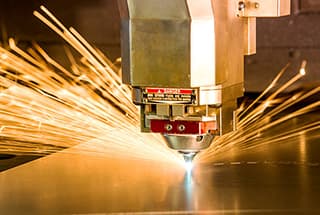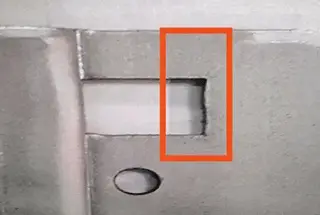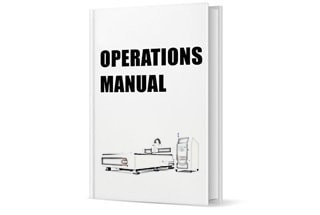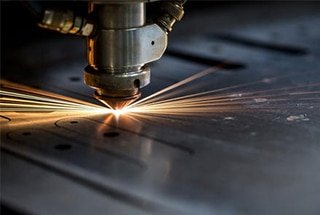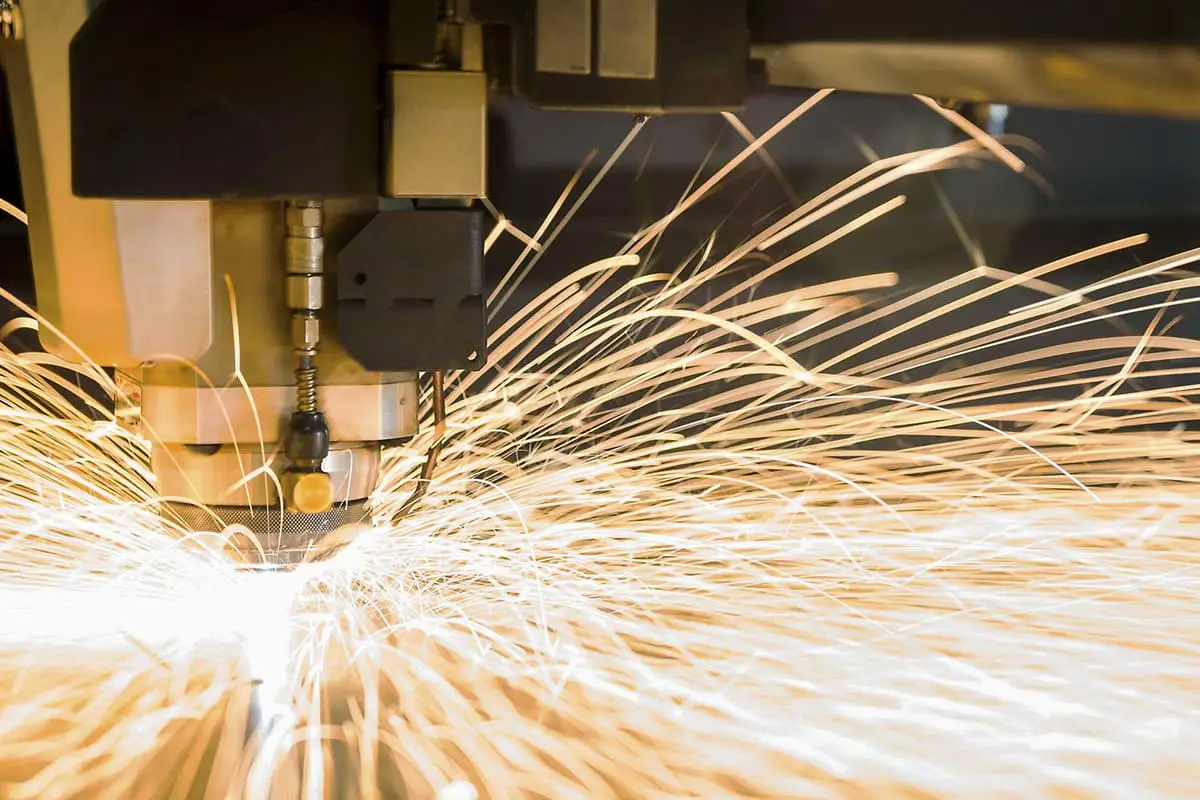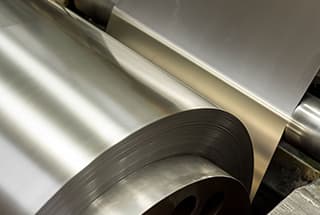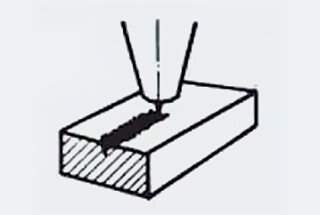
Imagine a machine that can slice through metal with the precision of a surgeon’s scalpel. Metal laser cutting machines offer this capability, transforming how industries work with metals. This article explores the types, principles, and applications of these cutting-edge tools. By the end, you’ll understand how these machines achieve high accuracy, efficiency, and versatility in metal processing, making them indispensable in modern manufacturing.
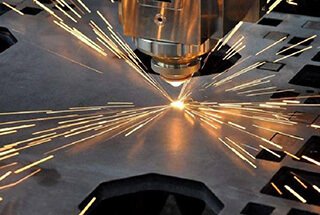
The metal laser cutting machine is a laser cutting machine specially designed to cut and process metal materials.
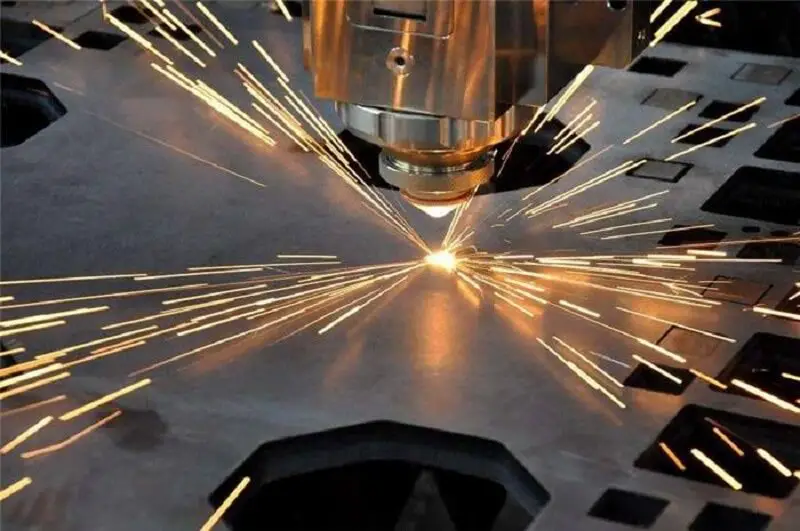
Currently mainstreamed types in the market are:
The CO2 laser cutting machine has strong cutting capacity and a wide range, making it a mainstream laser cutting equipment in the market. The fiber laser cutting machine is a new technology in recent years, and coupled with relatively low technical requirements, it has gradually gained popularity in the metal laser cutting machine equipment market.
The heat input from the laser beam exceeds the reflected, conducted, or diffused portion of the material, rapidly heating and vaporizing it to create a hole.
As the beam moves linearly with the material, it continuously forms narrow slits (e.g., about 0.1 mm) without causing thermal deformation of the workpiece.
During cutting, an appropriate auxiliary gas is added for the material being cut.
For steel, oxygen is used to oxidize the material and help blow away slag from the cutting edge.
Plastics like polypropylene are cut with compressed air, while inert gases are used for flammable materials like cotton and paper.
The auxiliary gas also cools the focusing lens, preventing soot from contaminating and overheating it.
Laser cutting is suitable for cutting most organic and inorganic materials.
In the metalworking industry, where industrial manufacturing is crucial, many metal materials can be cut without deformation, even with thicknesses up to 20 mm.
However, highly reflective materials such as gold, silver, copper, and aluminum alloys are difficult or impossible to cut with laser (although some hard cutting materials can be cut with pulsed-wave laser beams due to their high absorption coefficient).
It is used in sheet metal processing, aviation, aerospace, electronics, electrical appliances, subway accessories, automobiles, machinery, precision accessories, ships, metallurgical equipment, elevators, household appliances, gifts, tool processing, decoration, advertising, metal processing and other manufacturing and processing industries.
It is mainly used for cutting carbon steel, silicon steel, stainless steel, aluminum alloy, titanium alloy, galvanized sheet, pickled sheet, aluminized zinc sheet, copper and other metal materials.
High cutting accuracy and stability.
Using a precision ball screw drive mechanism and optimized CNC system control can meet the precision parts processing, with stable dynamic performance and long working time.
High quality of cutting section.
It adopts the mechanical follow-up cutting head system, the cutting head is moved with the plate height, and the position of the cutting point always remains unchanged, so that the slit is flat and smooth, and the cross-section does not need post-processing, which is suitable for flat or curved plate cutting.
It has large cutting width, which adapts to cut more materials and has a wide range of applications.
It can cut metal plates up to 2500mm × 1250mm in width.
The materials that can be processed are plain carbon steel, stainless steel, alloy steel, aluminum plate, copper plate, titanium plate, and so on.
High-cost performance.
For thin plate cutting, it can replace the CO2 laser cutting machine, CNC punching machine, and shearing machine, etc., its cost is equivalent to 1/4 of the CO2 laser cutting machine, 1/2 of the CNC punching machine.
Low cost of use.
A YAG solid-state laser is used, the main consumables are electrical energy, cooling water, auxiliary gas, and laser light, the average cost is about $28 per hour.
Core technology:
Top 20 Metal Laser Cutting Machine Manufacturers
The price of a metal laser cutting machine depends on many factors such as the type, size, and thickness of the metal to be cut which determines the working table of the selected machine, laser source, motor power, etc., and therefore the price will vary. It is best to ask the manufacturer for the exact price, but currently, a 1000W laser cutting machine is around $30,000.
Metal laser cutting machine
A metal laser cutting machine uses a high-power density laser beam to scan over the surface of the material, heating it to thousands or tens of thousands of degrees in a short time to melt or vaporize the material. The melting or vaporized material is blown away from the cutting slit with high-pressure gas to achieve the purpose of cutting material.
Unlike traditional mechanical knives, laser cutting uses an invisible light beam, and the mechanical part of the laser head has no contact with the work, avoiding scratches to the work surface.
Laser cutting is fast and creates a smooth and even incision that does not need subsequent processing in general. The cutting heat affected zone is small, causing minimal plate deformation and a narrow slit (0.1mm to 0.3mm). There are no mechanical stresses in the incision, and no shear burrs are formed.
Laser cutting also offers high machining accuracy, good repeatability, and no damage to the material surface. It can be programmed with CNC to process any plan and perform whole board cutting with a large width without opening the die, which is economical and time-saving.
CNC plasma cutting machine
The CNC plasma cutting machine is a type of thermal cutting equipment that uses the heat of a high-temperature plasma arc to locally melt the metal at the incision of the workpiece. It uses the momentum of the high-speed plasma to remove the molten metal to form an incision.
With the development of plasma cutting, the working gas used has a significant impact on the cutting characteristics, cutting quality, and speed of the plasma arc. Commonly used plasma arc working gases are argon, hydrogen, nitrogen, oxygen, air, water vapor, and some gas mixtures.
Plasma cutting machines are widely used in industries such as automobiles, locomotives, pressure vessels, chemical machinery, nuclear industry, general machinery, engineering machinery, and steel structure.
In terms of cutting accuracy, plasma is around 1mm, while the laser can reach within 0.2mm. As for cutting efficiency, the laser offers a combination of speed and precision, cutting 1mm plates at a rate of 26 meters per minute.
It can be said that plasma cutting is for rough processing and requires additional polishing and secondary processing with cumbersome work. In contrast, the laser cutting machine is for fine processing, completing the task in one step.
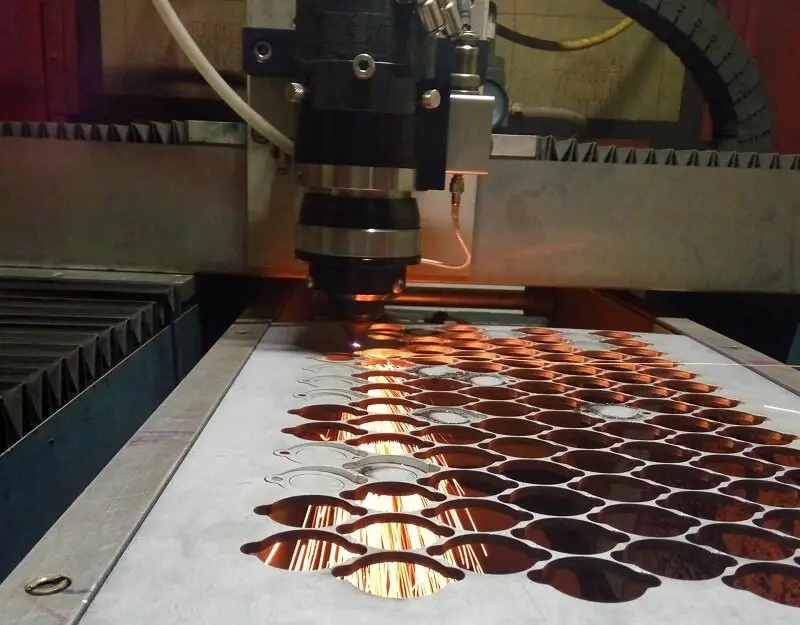
In general, it is recommended to use a CO2 laser cutting machine for cutting carbon steel plates up to 20mm, stainless steel plates up to 10mm, acrylic, wood, and other non-metallic materials.
Laser cutting machines have high cutting power and no deformation during processing.
No tool wear, good material adaptability.
Both simple and complex parts can be cut with laser precision in a single step.
It has a narrow slit, good cutting quality, high degree of automation, easy to operate, low labor intensity, and no pollution.
It can achieve cutting automatic nesting, nesting, improving the utilization of materials, which has a low cost of production and good economic efficiency.
Laser cutting machine selection has many factors to consider. In addition to the maximum size of the workpiece to be processed, the material, the maximum thickness to be cut, and the size of the raw material width, it is necessary to consider the future direction of development. Such as the technical adaptation of the products made after the maximum size of the workpiece to be processed, the steel market to provide the width of the material for their products which is the most economical, loading and unloading time, etc.
Laser cutting machines are a technological revolution in sheet metal processing, the “processing center” in sheet metal processing.
Laser cutting machine has high flexibility, fast cutting speed, high production efficiency, and short product cycle, which win a wide range of markets for customers.
The effective life of the technology is long. Foreign sheet metal with more than 2 mm thickness is mostly cut using laser cutting machines, and many foreign experts agree that the next 30-40 years is the golden age of laser processing technology development.
Market demand
Although still in the preliminary development stage, the laser industry in China has made a significant leap forward under the leadership of international science and technology, and has gained significant prominence on the global stage.
The market demand for laser cutting machines in China is very high, with a market size of tens of millions of dollars, providing new opportunities for growth in the industry.
Since the birth and application of the first laser equipment in the 1960s, several Chinese experts have made significant contributions to the development of the laser industry, achieving international standards.
The production of complete sets of industrial equipment for laser technology has enabled China to overcome its reliance on foreign technology, filling the gap in the domestic laser industry.
The rapid growth of the domestic economy has made the laser industry a high-growth backbone of the market, with an annual growth rate of more than 20%, becoming a driving force for the global laser market.
Experts predict that the domestic laser market will continue to grow rapidly, possibly doubling in the future, and expanding the market for laser cutting equipment, filling the gap in the domestic market.
This growth will enable China’s high-end laser equipment to break free from its current limitations, and become a leading force in the international market.
Breakthrough technology
Since all machines and equipment are not perfect, metal laser cutting machines also suffer from certain shortcomings.
If the metal laser cutting machine wants to further develop, it must break through the following technology.
If a metal laser cutting machine wants a better development, it must break through the lightness and flexibility of the metal laser cutting machine beam as well as the high rigidity and high stability of the machine structure.
This will further improve the cutting accuracy of the metal laser cutting machine and the use of flexibility.
A perfect modern machine needs to have a high-quality control system.
High-quality control system can make operation more simple, improve efficiency and reduce the error due to manual operation.
The quality of the beam is the key to the cutting quality of the metal laser cutting machine.
Good focusing technology can make the object to be processed more beautiful, so as to achieve the effect you want.
These include edge monitoring, capacitance height tracking, cutting monitoring, and penetration detection.
In this way, it can better cooperate with the conversion of laser cutting graphics, making it simple and smooth to write complex part programs, and it is also very convenient to edit and modify.
Therefore, it is very important to develop and design a special CAD/CAM software system.
Metal laser cutting is currently one of the best processing equipment, I believe that in the near future our metal laser cutting machine will be further perfected. So as to meet the needs of our market.
It should strictly in accordance with the laser start-up procedures to start the laser, dimming and test machine.
If it is necessary to leave, the operator should stop the machine or cut off the power switch.
Turn off the laser or shutter when not working;
Do not place paper, cloth, or other flammable materials near the unprotected laser beam.
The use and transportation of gas cylinders shall comply with gas cylinder supervision regulations.
It is forbidden to explode gas cylinders in the sun or close to heat sources.
When opening the bottle valve, the operator must stand on the side of the bottle’s mouth.
Every 1 day of operation or weekly maintenance, every 1000 hours of operation or every six months of maintenance, which must be carried out in accordance with regulations and procedures.
Every product requires good maintenance to ensure a higher service life, and this is no exception for metal laser cutting machines. So, how should we maintain them to achieve high and stable life expectancy?
Cleaning dust and metal impurities
Cleaning dust is a part of daily maintenance for every machine, and a clean and tidy machine is essential for product quality assurance. Metal laser cutting machines are mainly used for metal processing, and although cut metal is usually blown away, there may still be some residues left, so it is important to clean these impurities.
Regular maintenance and usage statistics
Each part of the metal laser cutting machine should be inspected and recorded on a regular basis. Ineffective parts should be replaced promptly to ensure that the machine operates in an optimal working environment. Defective parts can adversely affect the machine’s overall performance.
After analysis, the following shows the main conditions that cause processing instability:
According to the working and design principles of CO2 laser cutting, solutions to these common problems can be made based on the processing method of metal laser cutting machines and material analysis.
Materials processed by metal laser cutting machines have high reflectivity to infrared energy at room temperature, although CO2 lasers emitting 10.6um beams in the far-infrared band are successfully applied in many metal laser cutting practices.
The initial absorption of 10.6um laser beams by metals is only 0.5% to 10%, but when focused laser beams with power densities in excess of 106w/cm2 are directed at a metal surface, the surface quickly begins to melt in microseconds.
The absorption rate of most metals in the molten state increases dramatically, typically by 60% to 80%.
Carbon steel:
Modern laser cutting systems can cut carbon steel plates up to a maximum thickness of 20mm. Using oxidative fusion cutting mechanism to cut carbon steel can control the width of the cut slit in a satisfactory range, with the slit of thin plates being as narrow as 0.1mm.
Stainless steel:
Laser cutting is an effective tool for manufacturing industries that use thin stainless steel sheets as the main component. By strictly controlling the heat input to the laser cutting process, the heat-affected zone at the cutting edge can be limited to a minimum, which is very effective in maintaining the material’s good corrosion resistance.
Alloy steels:
Most alloyed structural and tool steels can be laser cut to achieve good edge quality. Even for some high-strength materials, straight and non-sticky slag cutting edges can be obtained as long as the process parameters are properly controlled. However, for high-speed tool steels and hot-die steels containing tungsten, melting and slagging can occur during laser cutting.
Aluminum and alloys:
Aluminum cutting uses a melting and cutting mechanism, and the auxiliary gas used is mainly to blow away the molten product from the cutting area to obtain a better cut surface quality. For some aluminum alloys, attention must be paid to prevent intergranular microcracks on the cut surface.
Copper and alloys:
Pure copper (copper) with too high reflectivity cannot be cut with a CO2 laser beam. Brass (copper alloy) uses higher laser power, and the auxiliary gas uses air or oxygen, which can cut thinner plates.
Titanium and alloys:
Pure titanium can be well coupled to the thermal energy of the focused laser beam. The auxiliary gas uses oxygen when the chemical reaction is intense, leading to faster cutting speed, but an oxide layer can be generated at the cutting edge, and carelessness will also cause overburning. To be on the safe side, the use of air as an auxiliary gas is better to ensure the quality of cutting. The quality of titanium laser cutting commonly used in aircraft manufacturing is better, although there will be a little slag at the bottom of the kerf, it is easy to remove.
Nickel alloy:
Nickel-based alloys, also known as superalloys, come in many varieties. Most of them can be cut using oxidative fusion cutting.

